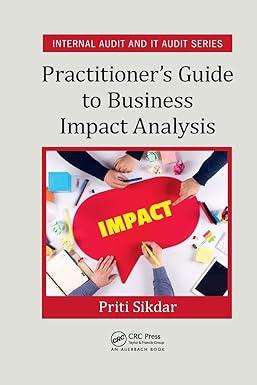Question
Suppose that we buy an asymmetric butterfly on a stock using puts with strike prices 60, 70, and 75. We denote the price of the
Suppose that we buy an asymmetric butterfly on a stock using puts with strike prices 60, 70, and 75. We denote the price of the put option with strike price K by P(K). We denote prices as pure numbers, omitting any notation for a currency such as the dollar sign. The price of this stock at the expiration date T is denoted by ST . We assume that we can trade put options for a number of shares that can be any positive integer (and not necessarily a multiple of 100) and that the risk-free interest rate r = 0.06. Suppose that P(60) = 0.90, P(70) = 4.15, and P(75) = 7.30. Let the number of options used (denoted by a positive integer no matter whether the options are bought or sold) be N(K) for the strike price K. (a) (1 point) Are the options for strike price 60 bought or sold ? (b) (1 point) Are the options for strike price 70 bought or sold ? (c) (1 point) Are the options for strike price 75 bought or sold ? (d) (4 points) Suppose that each N(K) is a positive integer and that we choose the numbers N(K) to be as small as possible. Determine N(60), N(70), and N(75). There is only one correct answer. Also explain how you got your answer. (e) (3 points) What is the total amount that we pay for this butterfly ? Show your work. (f) (5 points) If T = 1/4 (3 months) and if the stock price ST = 72 at expiration, what is our profit for this transaction (expressed as a real number, which is negative if, and only if, we have a net loss)
Step by Step Solution
There are 3 Steps involved in it
Step: 1

Get Instant Access to Expert-Tailored Solutions
See step-by-step solutions with expert insights and AI powered tools for academic success
Step: 2

Step: 3

Ace Your Homework with AI
Get the answers you need in no time with our AI-driven, step-by-step assistance
Get Started


